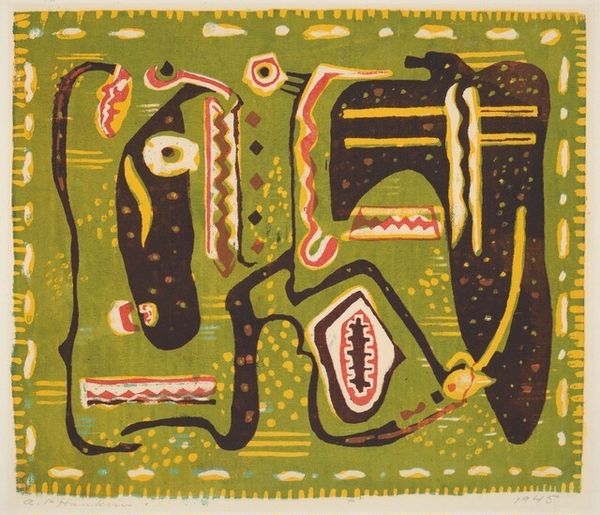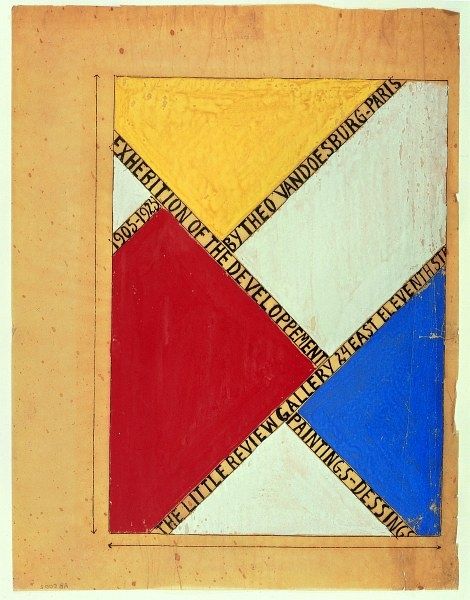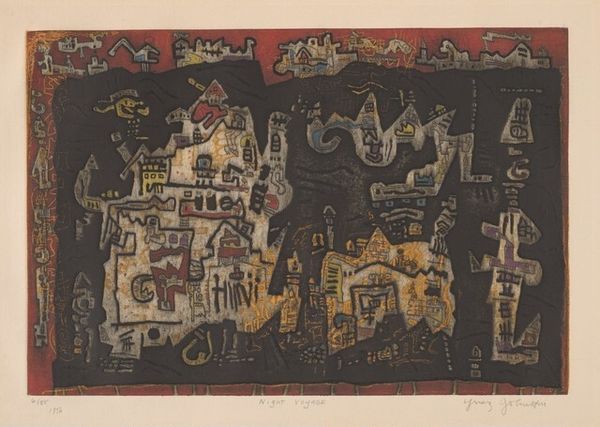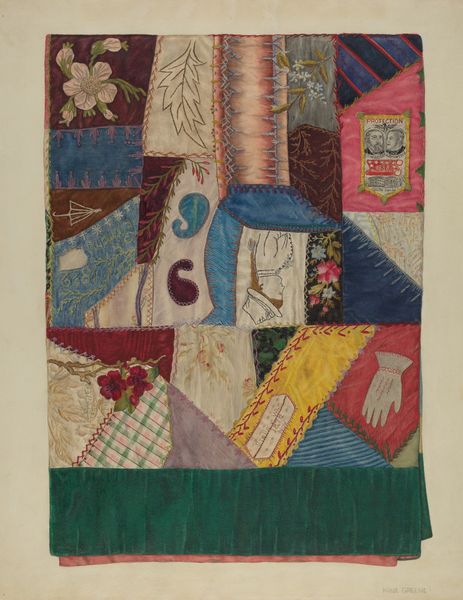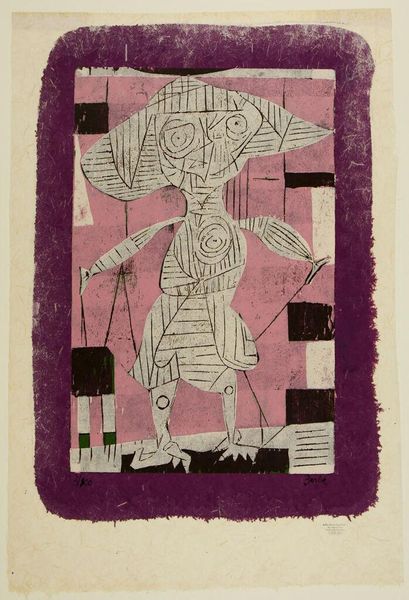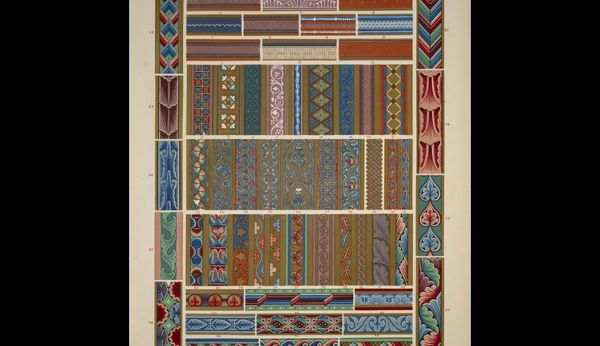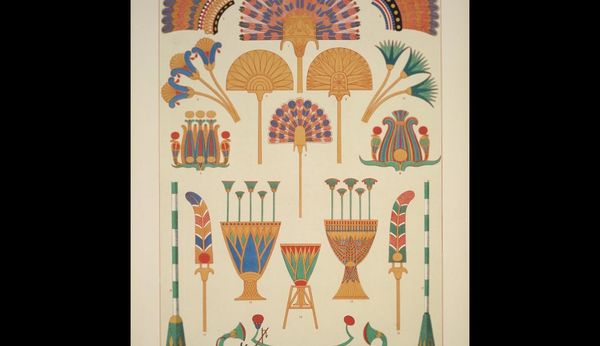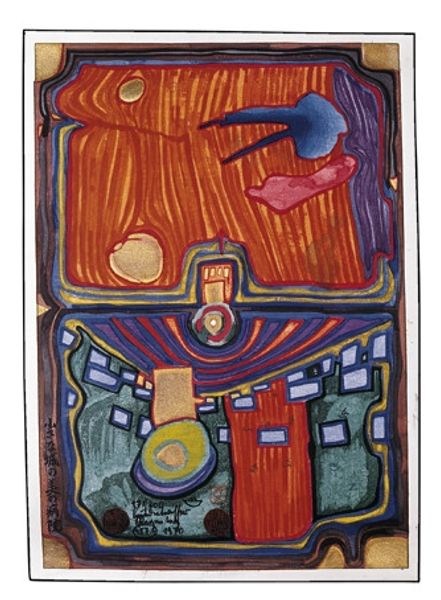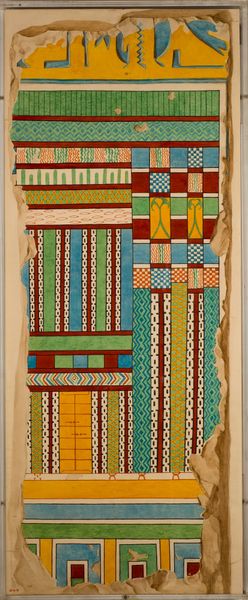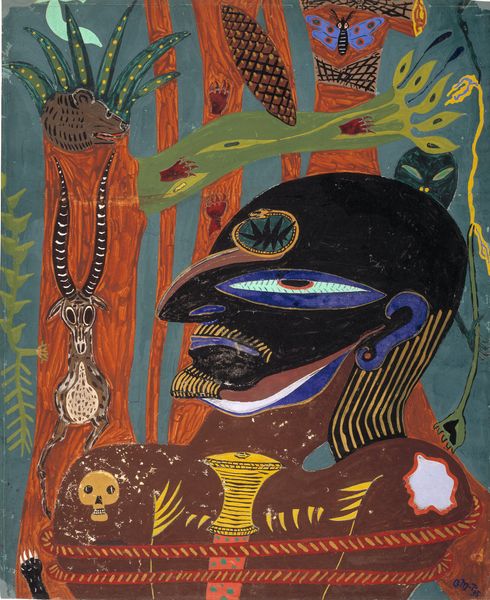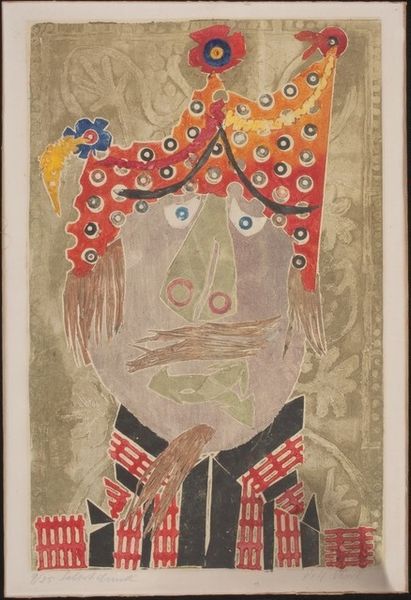
painting, oil-paint
#
abstract-expressionism
#
painting
#
oil-paint
#
geometric
#
abstraction
Dimensions: 58 x 42 cm
Copyright: Public domain
Curator: Standing before us, we have Wassily Kandinsky’s "Conglomerat," painted in 1943. It's an oil painting, currently residing here at the Centre Pompidou in Paris. Editor: Wow, what a... vibrant grid? My first impression is organized chaos, if that makes any sense. So many shapes, like tiny symbolic cities crammed onto this glowing yellow board. Curator: It does! Think of Kandinsky’s path. He started with representation and transitioned to pure abstraction, viewing art as a spiritual language. “Conglomerat”, created during a tumultuous time as he sheltered from the Nazi occupation, might echo that fractured sense of world order and his need to reinvent structure. Editor: You see the turmoil. I initially felt a sense of playfulness. But seeing that hand pointing—is it guidance? Judgement? It does suggest more is at stake. And the way everything is neatly bordered almost intensifies the chaotic feeling. Curator: Kandinsky certainly was exploring that delicate balance between control and release. His Bauhaus years honed an understanding of geometric forms, and later in Paris, living among surrealists influenced his work. Each little window provides clues, a dreamscape where industry meets organic. Editor: And that blue… such a cool counterpoint to the yellow. I think the scale too – the way all those individual elements demand closer inspection… Do you feel Kandinsky succeeds in forging harmony from disarray, or rather displays an impossible feat? Curator: Maybe it's the attempt, the quest for harmony rather than achievement, that speaks volumes here. The historical pressure under which he worked transformed the spiritual yearning present in his earlier abstract forms, creating new possibilities. It acts almost like an encoded document of resistance and survival. Editor: So it’s like turning pure abstract theory into material hope, despite the landscape collapsing around him… Food for thought, thanks! Curator: It's always worthwhile thinking more about how individual responses help connect us to wider conversations.
Comments
No comments
Be the first to comment and join the conversation on the ultimate creative platform.
